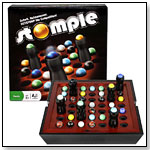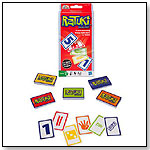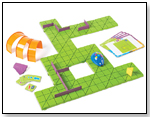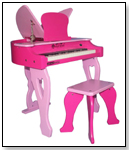|
|
10 Questions With Greg Zima, President of GaZima Games, Inc. Preparation and Promotion Are Key To Selling Your Game
Scroll to the bottom of the interview for the full, unedited version. Q. How did you first come up with the idea for your first or most successful game? A. My first game was Zip! and I actually dreamt it. My most successful game so far has been Ratuki (Hasbro). A very close second is Stomple! (Spin Master), which just won several awards including Mensa Select, National Parenting Seal, Major fun and Parent's Choice. I guess the fans will ultimately decide [which is the most successful]! The idea for Ratuki was to come up with a fast paced card game that everyone could play at the same time. Ratuki actually means "fast" in the Aymara language spoken by native Indians in South America. 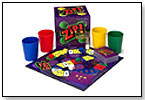 Q. How long did it take from the original spark of an idea to actual production? Q. How long did it take from the original spark of an idea to actual production?A. This is a tough question as each game varies. I would say on average it takes about 6 months to get a solid prototype and another 6 to 12 months license it. After licensing it takes usually about 12 to 18 months to see the game in stores. Q. How much money did you need to create the first prototype and come up with a business plan? A. Business plan? I mean of course, business plan. GaZima Games actually started off as a hobby and I used personal capital to fund and grow Gazima Games. My ideas are my products so the cost to produce is more time-related than financial. Money is spent on attending industry events, prototypes, websites, grass roots promotion and other events. I often joke that our biggest expense is pizza and drinks for all of our test playing groups. In all seriousness when you add in travel, hotel, prototypes, shipping and art I would say expenses run about $10K - 15K a year, if I count my time as free. Q. How did you raise it, and how long did it take to raise it? A. I used to be a financial planner and took my own advice and saved money. My business associates Stefan Maroudis and Greg Lane have to pick up some of the expenses for the games that they are involved in. Q. What was the best advice you received? A. Bring better prototypes to show. Many people will tell you that they will take a game idea on a napkin; if that is true, it is the exception, not the rule. All of our big licenses had professional working prototypes. Q. The worst advice? A. Honoring a 'gentlemen's agreement' based upon another relationship in the business. Though the toy industry is full of great people, there are still those out there that will take advantage of a new inventor. Make sure you have everything in writing and understand what you are signing. Q. What was the most significant obstacle you had to overcome to achieve success and how did you do it? 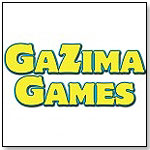 A. Time. We were a little naïve on how long it would initially take [to go] from a game idea, to prototype, to license, to seeing your game on a store shelf, and to ultimately seeing a royalty check. A well prototyped and play tested game, along with a strong presentation has shortened that time considerably. Q. What one unique quality makes your product better than your competition? A. We play test our games extensively. We also consider ourselves part of the product and assist in grass roots promotion to include speaking at schools, attending conventions, and game nights. Games often grow by word of mouth and we enjoy interacting with our fans. Q. What one piece of advice would you offer to someone just starting out in the toy industry? A. Think long and hard about making the decision to get involved. Good ideas are a dime a dozen; the hard work is in networking and following up (with a little bit of luck and timing). We have what we call the four Ps: Play test, Prototype, Presentation and Promote. We spend a lot of time going back and forth between play testing and prototyping (which includes rule writing). Then there is the general advice: bring well-made prototypes, trademark the name if it is important, have an NDA, make sure you read any contract thoroughly, do your research to make sure your game isn't already out in the market, attend trade shows and do everything you can to understand the business you are about to enter. Also, don't fall in love with your idea and be open to suggestions and changes. Test your game with as many different and diverse groups as you can. You will be surprised at what you learn. Here are three things that a new inventor should avoid saying during a presentation: 1. My kids love playing this game. (Of course they do- because You are playing with them!) 2. I think it will sell a million units in the first year (you are presenting to people in the industry, do you know how many units a new game traditionally sells in the first year?) 3. This game is better than (insert any game name here). Scroll to the end of this article to view products from GaZima Games, Inc. Unedited Interview: 1. How did you first come up with the idea for your first or most successful game? My first game was Zip! and I actually dreamt it. My most successful game so far has been Ratuki (Hasbro). A very close second is Stomple! (Spin Master) which just won several awards including Mensa Select, National Parenting Seal, Major fun and Parent's Choice. I guess the fans will ultimately decide! The idea for Ratuki was to come up with a fast paced card game that everyone could play at the same time. Ratuki actually means "fast" in the Aymara language spoken by native Indians in South America. 2. How long did it take from the original spark of an idea to actual production? This is a tough question as each game varies. I would say on average it takes about 6 months to get a solid prototype and another 6 to 12 months license it. After licensing it is usually about 12 to 18 months to see the game in stores. 3. How much money did you need to create the first prototype and come up with a business plan? Business plan? I mean of course, business plan. GaZima Games actually started off as a hobby and I used personal capital to fund and grow Gazima Games. My ideas are my products so the cost to produce is more time than financial. Money is spent on attending industry events, prototypes, website, grass roots promotion and other events. I often joke that our biggest expense is pizza and drinks for all of our test playing groups. In all seriousness when you add in travel, hotel, prototypes, shipping and art I would say expenses run about $10K - 15K a year, if I count my time as free. 4. How did you raise it, and how long did it take to raise it? I used to be a financial planner and took my own advice and saved money. My business associates Stefan Maroudis and Greg Lane have to pick up some of the expenses for the games that they are involved in. 5. What was the best advice you received? Bring better prototypes to show. Many people will tell you that they will take a game idea on a napkin, if that is true that is the exception not the rule. All of our big licenses had professional working prototypes. 6. The worst advice? Honoring a 'gentlemen's agreement' based upon another relationship in the business. Though the toy industry is full of great people, there are still those out there that will take advantage of a new inventor. Make sure you have everything in writing and understand what you are signing. 7. What was the most significant obstacle you had to overcome to achieve success and how did you do it? Time. We were a little naïve on how long it would initially take from a game idea, to prototype, to license, to seeing your game on a store shelf, and to ultimately seeing a royalty check. A well prototyped and play tested game, along with a strong presentation has shortened that time considerably. 8. What one unique quality makes your product better than your competition? We play test our games extensively. We also consider ourselves part of the product and assist in grass roots promotion to include speaking at schools, attending conventions, and game nights. Games often grow by word of mouth and we enjoy interacting with our fans. 9. What one piece of advice would you offer to someone just starting out in the toy industry? Think long and hard about making the decision, good ideas are a dime a dozen, the hard work is networking and following up, (with a little bit of luck and timing). We have what we call the four Ps: Play test, Prototype, Presentation and Promote. We spend a lot of time going back and forth between play testing and prototyping (which includes rule writing). Then there is the general advice, bring well made prototypes, trademark the name if it is important, have an NDA, make sure you read any contract thoroughly, do your research to make sure your game isn't already out in the market, attend trade shows and do everything you can to understand the business you are about to enter. Also, don't fall in love with your idea and be open to suggestions and changes. Test your game with many different and diverse groups as you can. You will be surprised at what you learn. Here are three things that a new inventor should avoid saying during a presentation: 1. My kids love playing this game. (of course they do because you are playing with them!) 2. I think it will sell a million units in the first year (you are presenting to people in the industry, do you know how many units a new game traditionally sells in the first year?) 3. This game is better than (insert any game name here). Feel free to follow us on Facebook to track our progress and be sure to check out our website www.gazimagames.com, we have some great new games coming out soon! Feel free to follow us on Facebook to track our progress and be sure to check out our website www.gazimagames.com, we have some great new games coming out soon!
 Writer's Bio: Justina Huddleston graduated Magna Cum Laude from Emerson College with a BA in Writing, Literature, and Publishing in 2009. After graduating she was the on-site director of the Boston Children's Museum gift store for a year, selling educational, developmental, and creative activity toys that tied in with the museum's exhibits. Justina also interned at children's book publisher Candlewick Press before moving from Boston to Los Angeles, where she is now Editorial Director of TDmonthly Magazine. Read more articles by this author Writer's Bio: Justina Huddleston graduated Magna Cum Laude from Emerson College with a BA in Writing, Literature, and Publishing in 2009. After graduating she was the on-site director of the Boston Children's Museum gift store for a year, selling educational, developmental, and creative activity toys that tied in with the museum's exhibits. Justina also interned at children's book publisher Candlewick Press before moving from Boston to Los Angeles, where she is now Editorial Director of TDmonthly Magazine. Read more articles by this author |
| ||||||||||||||||||||||||||||||||||||||||||||||||
Disclaimer Privacy Policy Career Opportunities
Use of this site constitutes acceptance of our Terms of Use.
© Copyright 2025 PlayZak®, a division of ToyDirectory.com®, Inc.

